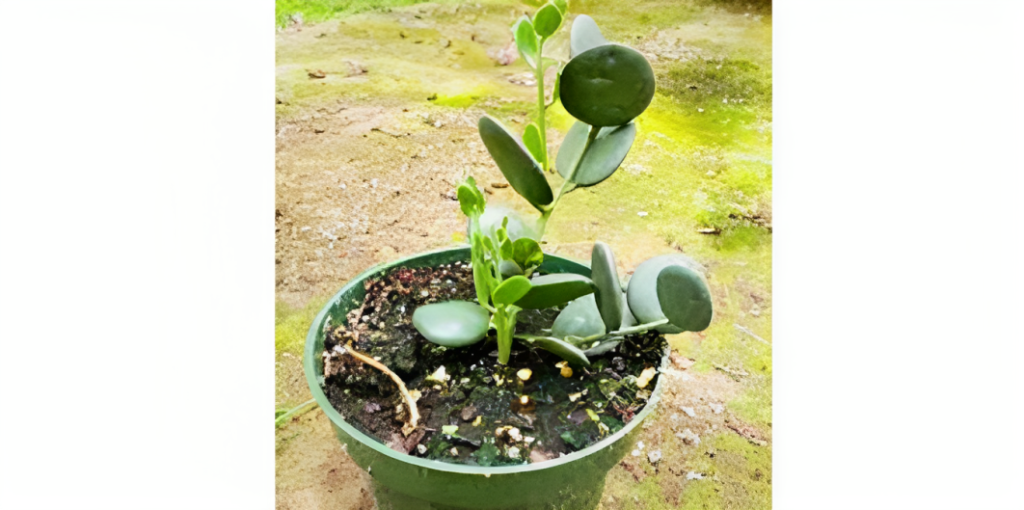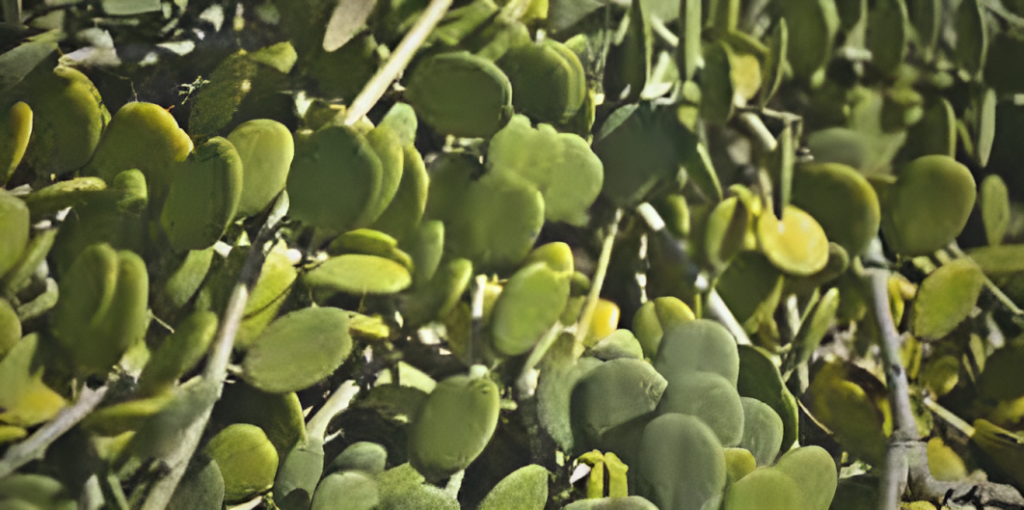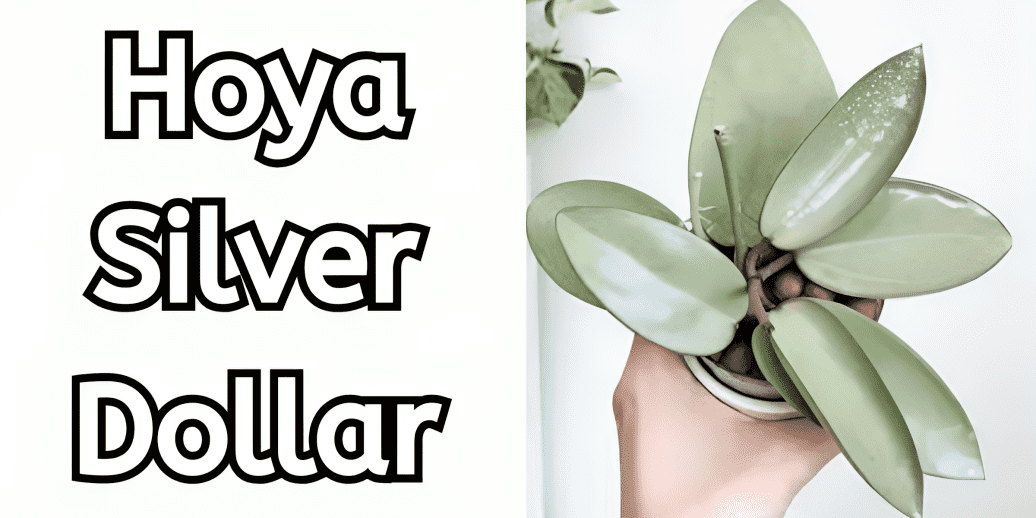The Hoya Silver Dollar, a gem in the world of houseplants, has been captivating plant enthusiasts for years. With its exquisite leaf structure and mesmerizing blooms, it’s no surprise that it’s often the centerpiece of many gardens and homes. Let’s embark on this botanical journey together!
Brief Overview
The Hoya Silver Dollar is part of the Apocynaceae family. Its thick, round leaves resemble silver dollars, hence the catchy name.
Native Regions and Historical Context
Originally from Southeast Asia, this plant has traversed borders, winning hearts wherever it goes.
Table of Contents
Characteristics of Silver Dollar Hoya
Understanding a plant’s characteristics can be your gateway to providing it with the best care.


Leaf Structure and Appearance
The leaves, as the name hints, resemble shiny silver coins. They’re thick, succulent, and boast a rich green hue.
Growth Habit
Being an epiphyte, the Hoya Silver Dollar loves to climb. Given the right support, it can ascend to impressive heights.
Hoya Silver Dollar Flower: Nature’s Art
Oh, the flowers! These blossoms are the pièce de résistance of the plant.
Blossom Traits and Aesthetics
The hoya silver dollar flower is star-shaped, often coming in a soft pink hue with a captivating fragrance that fills the evening air.
Flowering Cycle
The blooming season usually lies in the warmer months. With proper care, these flowers can be a recurrent spectacle.
Hoya Silver Dollar Caring: A Comprehensive Guide
Every plant has its demands, and our hoya silver dollar care’s is no exception.
Ideal Light Conditions
Bright, indirect sunlight is the mantra. A well-lit spot away from harsh sun rays is perfect.
Watering Tips and Tricks
Remember, it’s better to underwater than over. Wait until the soil is slightly dry before giving it a drink.
Soil and Potting Recommendations
Well-draining soil is key. A mix of perlite, orchid bark, and potting soil does wonders.
Temperature and Humidity Preferences
This plant thrives in temperatures between 60-80°F (15-27°C). It also enjoys higher humidity, making it a bathroom favorite.
Propagation Techniques for Silver Dollar Hoya
Fancy sharing the love? Here’s how.
Stem Cuttings Approach
Simply take a healthy stem, place it in water, and watch the roots grow!
Layering Technique
This involves bending a long vine back into the soil, allowing it to root before separating.
Key Features Of Hay Bines: (FOR FARMERS)
- Efficient Hay Cutting: Hay Bines are equipped with sharp, precision blades that effortlessly cut through thick grass and hay, ensuring a smooth and efficient baling process.
- Time-Saving: Say goodbye to the days of labor-intensive manual hay cutting. Hay Bines significantly reduce the time it takes to prepare hay for baling, allowing you to focus on other essential farm tasks.
- Improved Hay Quality: These machines cut hay with precision, minimizing damage and preserving the nutritional value of your fodder.
- Versatile Use: Whether you’re dealing with alfalfa, grass, or other forage crops, Hay Bines are adaptable and can handle various types of hay with ease.
- Reduced Operator Fatigue: With user-friendly controls and ergonomic design, operating Hay Bines is a breeze, reducing operator fatigue during long working hours.
- Durability: Built to withstand the rigors of the farm, Hay Bines are constructed from high-quality materials, ensuring longevity and minimal maintenance.
- Increased Productivity: Expect a significant boost in your farm’s overall productivity, thanks to the efficient hay cutting and baling capabilities of these machines.
Common Problems and Solutions
No plant is immune to issues, but forewarned is forearmed.
Pests and How to Deal with Them
Be on the lookout for mealybugs and spider mites. Neem oil can be a savior!
Diseases and Prevention Tips
Overwatering can lead to root rot. Ensure your pot has proper drainage.
| Pros | Cons |
|---|---|
| Efficient Hay Cutting: Save time and effort with precise hay cutting. | Initial Investment: The upfront cost can be relatively high. |
| Time-Saving: Reduced labor means more time for other farm tasks. | Maintenance: Regular upkeep required for peak performance. |
| Improved Hay Quality: Preserve the nutritional value of your fodder. | Noise Level: These machines can be noisy, which may not be suitable for quiet rural areas or residential proximity. |
| Versatile Use: Suitable for various types of hay and forage crops. | Fuel and Power Consumption: Hay Bines may consume a significant amount of fuel or electricity, affecting operational costs. |
| Reduced Operator Fatigue: Operator-friendly design for long hours. | Size and Storage: Haybines can be large and require ample storage area. |
| Durability: Built to last, minimizing maintenance hassles. | Learning Curve: Operators may need time to become proficient with the equipment. |
| Increased Productivity: Enhance overall farm productivity. | Weather Dependency: Like all farm machinery, Hay Bines can be affected by adverse weather conditions, potentially impacting productivity. |
The Allure of the Hoya Silver Dollar Flower
Beyond aesthetics, this plant carries profound symbolism.
Symbolism and Cultural Relevance
In some cultures, it’s seen as a sign of prosperity, thanks to its coin-like leaves.
Uses in Decor and Landscape Design
Its cascading vines make it a popular choice for hanging baskets or as a tabletop centerpiece.
Are you a dedicated farmer looking to streamline your hay baling process and maximize productivity? Look no further than the revolutionary Hay Bines. Designed with the modern farmer in mind, these cutting-edge machines are a game-changer for your agricultural operations.
Purchasing a Hoya Silver Dollar
If you’re looking to that hoya silver dollar for sale then buy it and add this gem to your collection, here’s your roadmap.
Factors to Consider
Ensure the plant looks healthy, devoid of pests, and has a strong root system.
Trusted Sources and Retailers
Always buy from reputable nurseries or check out online stores with positive reviews.
In Closing: The Unique Charm of the Hoya Silver Dollar
The Hoya Silver Dollar isn’t just a plant; it’s a piece of art, a symbol of prosperity, and a testament to nature’s wonders. Whether you’re a novice or a seasoned gardener, this plant promises to be a delightful addition to your collection. Happy gardening!
FAQs on Hoya Silver Dollar – Frequently Asked Questions
What is the ideal temperature for the Hoya Silver Dollar?
Aim for a range between 60-80°F (15-27°C).
How often should I water my plant?
When the top inch of soil feels dry.
Is it pet-friendly?
It’s best to keep it away from pets as it can be toxic if ingested.
Can it survive in low light?
It prefers bright, indirect light for optimal growth.
How long can a Hoya Silver Dollar live?
With proper care, it can live for several years.
When is the best time to repot?
Ideally, in the spring when it’s in its active growth phase.







